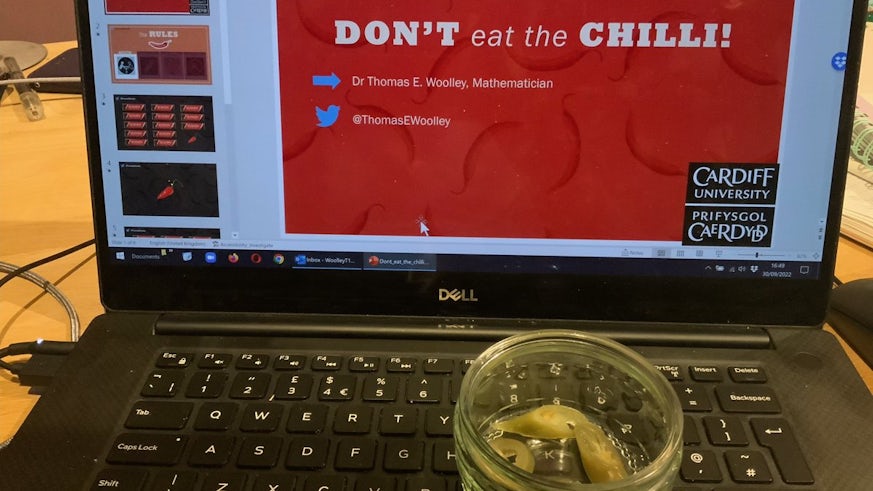School of Mathematics takes part in a ‘Night of Science’ for children and young people in Ukraine
19 October 2022

Staff and Students in the School of Mathematics have taken part in a Night of Science; a series of interactive and fun sessions for Ukrainian children and young people.
The sessions were the result of a Memorandum of Understanding (MOU) agreement designed to support staff and students affected by the conflict in Ukraine and to help build new research and learning opportunities with Zaporizhzhya Polytechnic. Two staff members and two PhD students from the School of Mathematics contributed to the sessions.
Senior Lecturer Dr Katerina Kaouri gave a talk about flying viruses and her work with researchers at the University of Oxford on the mathematical models of airborne transmission. Katerina, along with a team of postdoctoral scientists (recruited through funding from the Welsh government and the Royal Society), have created a quick-to-run model (Lau et al, 2022) for the airborne transmission of SARS-CoV-2. The model quickly determines the risk of infection in an indoor space, such as a classroom or a restaurant and agrees well with super spreader events around the globe. The model can also be used to study other viral diseases transmitted through the air.
Senior Lecturer Dr Thomas Woolley played a game with the children showing them how to use maths to force their friends to eat chillies. The game took place between two people at a time using 13 desirable objects (chocolate) and one undesirable one (the chilli). The players took it in turns picking 1, 2, or 3 chocolate bars until one player is left with the inevitable chilli.
Dr Woolley explains: “After a few games people start to realise that once they get down to the last four bars and the chilli the game is over because the however many chocolate bars the first person takes the second person can clear the rest of the four, leaving the first player with the chilli. And it is this insight we can exploit, namely, if we group the chocolate bars into 4s then there is one left over. Thus, to win, a player must go first, choose to take one bar and then how many their opponent takes, take the rest of the group of four. In this way the first player always leaves the second player with the chilli.”
PhD student Layla Sadeghi Namaghi presented interactive game ‘Who wants pie?’ for 5-14 year olds; a two-player game where contestants take it in turns to collect segments of pie. The aim of the game was to make up 15 slices of pie, using exactly three segments. There were segments for all slices up to 9. The rules were that you cannot make 15 with two or four segments, only three. The game continues until someone wins, or no one wins (in the case of a draw)!

Layla said “This seems challenging at first as it’s difficult to do the mental maths of how many slices you have and how many your opponent has as you’re going along. However, after a couple of games you notice that this is similar to the game noughts and crosses, which we have all played from a young age. The aim is to collect three of something in a row. So, if you arrange the numbers on a 3x3 grid, you can essentially play noughts and crosses. This was really enjoyable because even if as a child you don’t enjoy mental maths, you probably do enjoy playing this game. “
PhD student Timothy Ostler presented a very famous game in mathematics called the Monty Hall problem. In the format of a game show, there were three doors, behind which are a sports car, and two goats. The aim of the game was to select the door with the car behind it.
Timothy said: “First, you pick a door, after which another door is opened to reveal a goat. You then pick again between the remaining two doors. The question is, should you pick the same door twice, change your mind, or does it even matter? The correct solution is you should change your mind, but a way to understand the problem is simply by playing the game many times and keeping track of the score, which I got my audience to do. This is a really nice way of demonstrating a technique mathematicians use all the time, called Monte Carlo simulation.
The interactive Night of Science sessions were a great success with 200 Ukrainian children and youngsters taking part.




